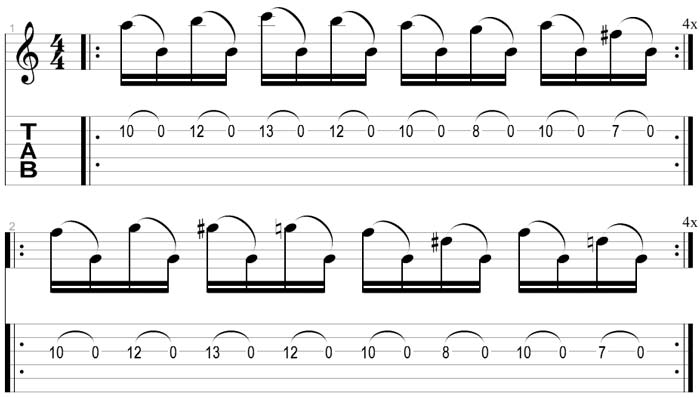How to use pedal tones in your licks
A pedal tone is when you alternate back and forth between one fixed note and others. For an easy example, if you played the notes: A C A E A F# A C# then A would be a pedal tone. Licks that use pedal tones sound interesting because every time you hear a new note, you are comparing it to the pedal tone. In other words, pedal tones focus on the different intervals between the pedal note and the other notes.
When writing your own licks using pedal tones, try to experiment with different intervals. The lick below uses the open B and G strings as the pedal tone. Pull-offs are used to make the lick sound more interesting. You may notice that the second bar is exactly the same as the first bar, only the string has changed. Normally when you change a lick to a different string you need to adjust it so it still fits in the same key. This example is to show you how keeping the intervals fixed to the pedal tone will give a certain feel to the lick. If you wanted to change how it sounds you can simply change the notes around.
Use a metronome to practice this lick because you want the notes to sound consistent. Don’t try to play it faster than you can comfortably as it will sound sloppy. Build up the tempo with the metronome over time. Once you learn the lick, try changing it slightly to play hammer-ons instead of pull-offs. It will change the feel slightly. Try playing the lick across other strings then try to come up with your own pattern using pedal tones. Keep in mind that the open strings were used just as an example, you don’t have to use open strings for pedal tones – you can use any other note on the guitar.
Please share this with other guitarists by clicking the buttons below


